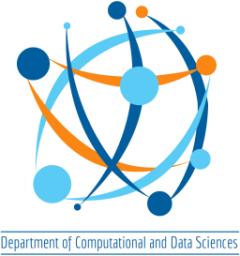DEPARTMENT OF COMPUTATIONAL AND DATA SCIENCES
Ph.D. Thesis Defense
Speaker : Mr. Ghanshyam Chandra
S.R. Number : 06-18-01-10-12-20-1-18380
Title : “Algorithmic Approaches to Pangenome Graph Problems”
Research Supervisor : Dr. Chirag Jain
Thesis examiner : Prof. Khan, Shahbaz, IIT Roorkee.
Date & Time : June 02, 2025 (Monday) at 10:00 AM
Venue : The Thesis Defense will be held on HYBRID Mode
# 102 CDS Seminar Hall /MICROSOFT TEAMS.
Please click on the following link to join the Thesis Defense
MS Teams link
ABSTRACT
The human reference genome serves as a foundational baseline for comparing newly sequenced human genomes. With the growing availability of high-quality human genome assemblies,
there is now an opportunity to modernize the reference genome by incorporating genome sequences from thousands of individuals. By capturing genetic variation of diverse populations, a pangenome reference promises to improve equity in human genetics and genomics.
An efficient way to represent a pangenome reference is a graph data structure where the vertices are labeled with sequences and the edges connect two sequences that appear consecutively in a genome.
Existing works have discussed the construction and the benefits of a pangenome reference, but most methods use ad-hoc heuristics that lack strong theoretical foundations. In this thesis, we introduce novel problem formulations and algorithms to address the following questions: (1) How to align sequences to a pangenome graph? (2) How to infer a newly sequenced genome using a pangenome reference? and (3) How to accelerate whole-genome alignment, a crucial step in pangenome graph construction?
The first two parts of this thesis focus on solving the problem of aligning sequencing reads to a pangenome graph. Given a set of exact substring matches between a read and the vertex labels, chaining refers to identifying an ordered subset of matches that be combined together to form an alignment. Previous methods ignore distances between match locations because computing distances quickly on graphs is non-trivial. We propose the first chaining formulations and efficient algorithms that account for the pairwise distances between match locations. The time complexity of our algorithms is parameterized in the size of minimum path cover, which is known to be small for pangenome graphs. We empirically demonstrate improved accuracy in aligning long reads to graphs.
In the second part, we further enhance the optimization criteria for sequence-to-graph alignment by penalizing recombinations, where a recombination refers to switching between genomes in a pangenome graph. This feature helps in improving the alignment quality, as most paths in a pangenome graph represent biologically unlikely recombinations. We develop efficient dynamic programming algorithms for chaining and alignment problems. We also give fine-grained reductions to prove that significantly faster algorithms are impossible under the strong exponential time hypothesis (SETH).
The third part of the thesis introduces a novel problem formulation for inferring an individual’s genome sequence as a path in a pangenome graph. This task is useful for variant discovery and genotyping applications. We give a proof of NP-hardness and design efficient integer programming algorithms. Using publicly available sequencing datasets, we show that our algorithm accurately infers major histocompatibility complex (MHC) sequences using low-coverage sequencing data, outperforming existing heuristic algorithms.
In the final part, we propose parallel algorithms to accelerate whole-genome alignment, a fundamental problem in bioinformatics. We implement a multi-core parallel chaining algorithm and a fast mechanism for differentiating primary and secondary chains. These optimizations lead to runtime gains over a commonly used parallel alignment algorithm, minimap2. We discuss the generalization of our techniques for fast pangenome graph construction.
ALL ARE WELCOME



